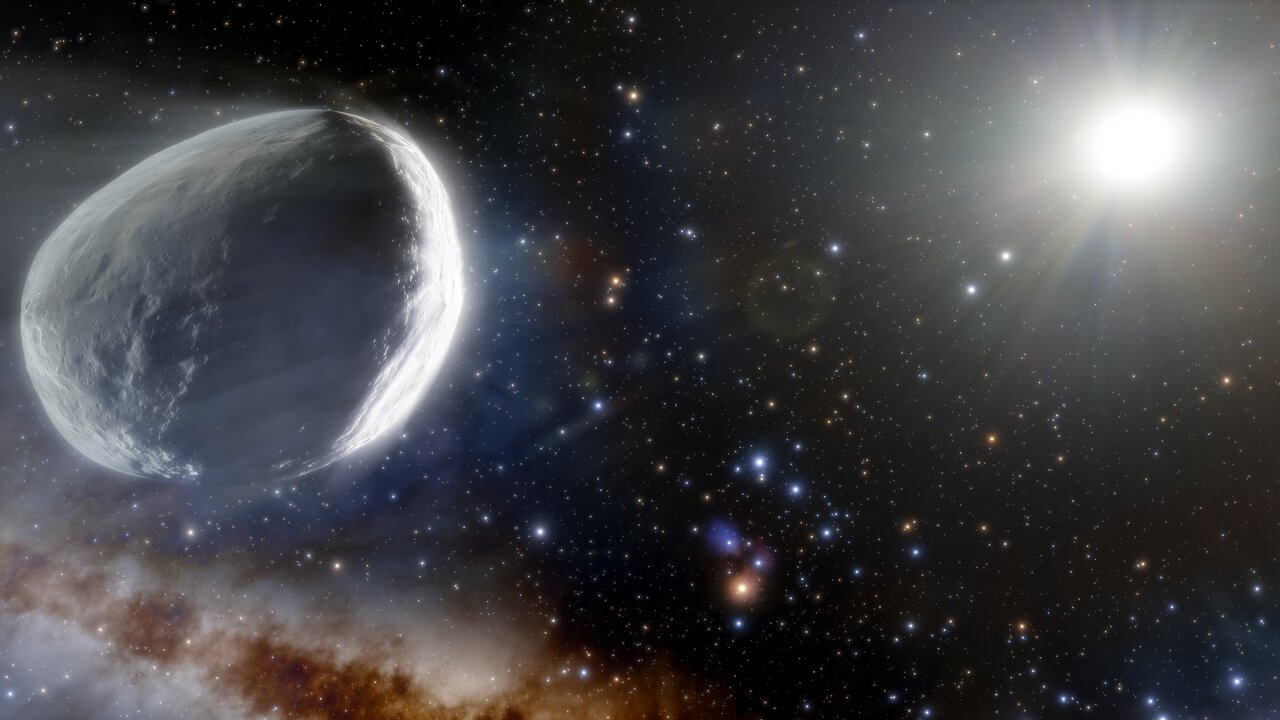

Astronomers have just confirmed the largest icy comet ever observed—and it’s headed in our direction. It’s a harmless giant, though. At its closest point to Earth, around the year 2031, astronomers say it will reach 1 billion miles away from the sun, about the distance of the planet Saturn.
The Hubble Space Telescope took new observations of the monster comet, C/2014 UN271, also called the Bernardinelli-Bernstein comet after its discoverers, Pedro Bernardinelli and Gary Bernstein. The comet was first observed in November 2010, when it was about as far away as Neptune, in the outer reaches of our solar system. Since then, astronomers have been trying to determine its true size and trajectory.
The team that just confirmed the comet’s size used the Hubble to take five photos of it on January 8, 2022. They then analyzed those images to see if they could distinguish the rocky nucleus at the center of the comet from the envelope of dust and other particles haloed around it. With those images, they estimate that the Bernardinelli-Bernstein comet’s nucleus is approximately 80 miles across, making it larger than the state of Rhode Island. The team published their findings on Tuesday in The Astrophysical Journal Letters.
“This is an amazing object, given how active it is when it’s still so far from the sun,” the paper’s lead author Man-To Hui of the Macau University of Science and Technology said in a statement. “We guessed the comet might be pretty big, but we needed the best data to confirm this.”
This comet is more than 30 percent bigger than the previous record holder, a comet spotted in 2002 with a nucleus of about 60 miles across. It also has a staggering estimated mass of 500 trillion tons, 100,000 times greater than typical comets in our solar system.

The Bernardinelli-Bernstein comet is currently at the edge of our solar system and has been shooting toward the sun for over 1 million years, traveling at 22,000 mph. Its origin is a mystery, though it is hurtling toward us from the Oort Cloud, which astronomers hypothesize to be a nesting ground for trillions of comets. The cloud’s closest edge lies somewhere 2,000 to 5,000 times the distance between the sun and Earth, according to best estimates, while its farthest edge may extend at least a quarter of the way toward Alpha Centauri, the stars nearest to our solar system.
[Related: Scientists finally solve the mystery of why comets glow green]
“This comet is literally the tip of the iceberg for many thousands of comets that are too faint to see in the more distant parts of the solar system,” study co-author David Jewitt, a professor of planetary science and astronomy at the University of California, Los Angeles, said in a statement. “We’ve always suspected this comet had to be big because it is so bright at such a large distance. Now we confirm it is.”